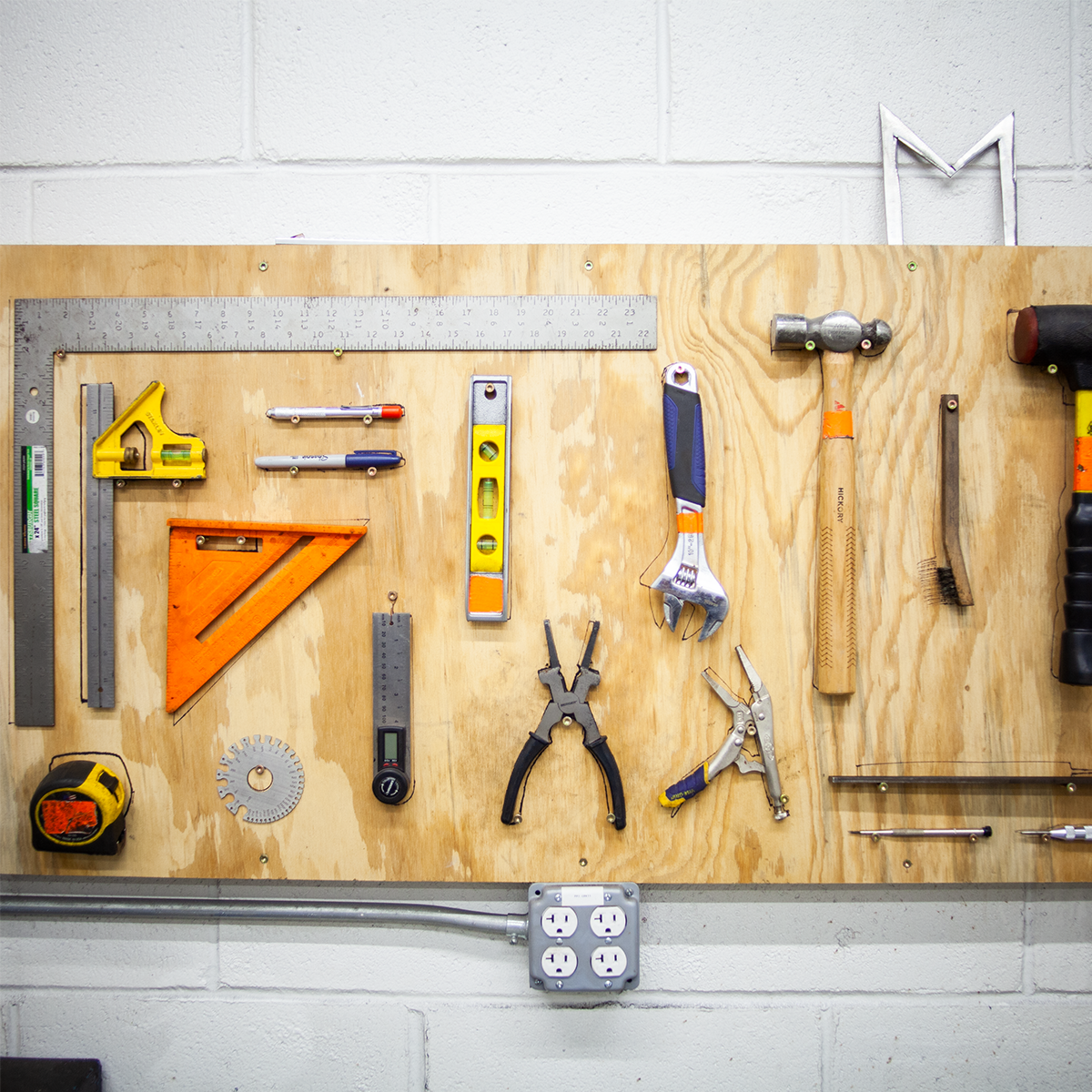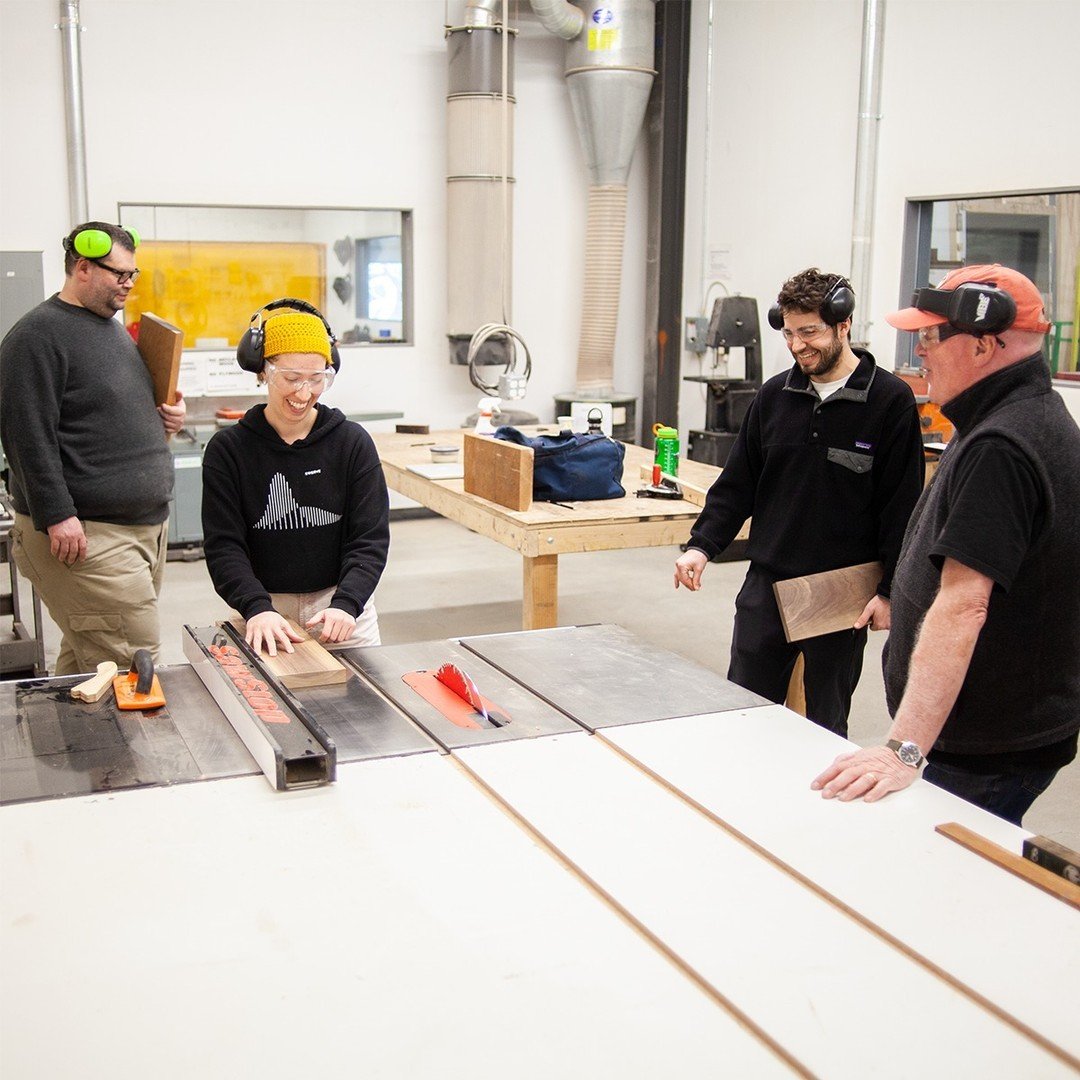How Factory 3 is organized & why
Keeping a makerspace clean and organized can be a huge challenge. Simply asking members to clean up and put tools away (or posting a sign directing them to do so) is not helpful. After a long day working in the shop it can feel like there’s no energy left for cleanup. But does it have to be this way?
We believe if we’ve done our job right, cleaning up can actually feel energizing. The mind craves order, so putting a tool away in its proper home can feel satisfying — but only if we’ve set up the shops correctly.
Every communal shop at Factory 3 is designed with three principles in mind.
PRINCIPLE #1: A place for everything
Every single tool at Factory 3 must have exactly one home. This home must be easy to locate and clearly labeled.
We’ve found the best way to do this is with tool walls. An outline traced on the wall makes the tool's proper home easy to find, but also accomplishes something even more important. Like the feeling of satisfaction from putting the final puzzle piece in place, putting a tool away in its proper home on the wall triggers the reward centers in the brain and provides a boost of energy.
PRINCIPLE #2: First order retrievability
Adam Savage preaches, “you should never have to move one tool to get to another.”
If you have to move one tool out of the way in order to return another to its home, you may find it easier just to set the tool down on the table with the thought, "I'll put that away later" — and then never put it away. By clearing all the barriers — and making the route to the tool's home also the path of least resistance — it will naturally find its way there every time.
PRINCIPLE #3: Continuous improvement
We expect our members not only to clean up after themselves, but also to improve the quality of Factory 3. This could mean putting away tools that got left out, sweeping up a little more of the shop than just the area they worked in, or coming up with ways to improve our organizational system.
As described in the book Atomic Habits, “regular 1% improvements are easy to manage — but sustained over time lead to exponential change.”
Seeing this change happening around us every day is incredibly motivating.




